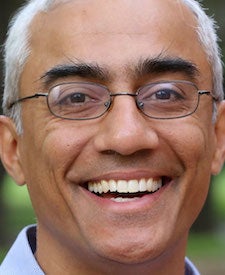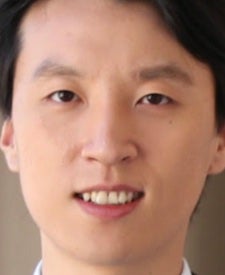Three NSF grants support future of wireless
Three collaborative National Science Foundation grants to electrical and computer engineer Ashu Sabharwal promise to make the coming months very productive as his Rice University lab invents tools and techniques to improve next-generation wireless communications.

Sabharwal will join colleagues at the University of California, San Diego (UCSD), the University of California, Santa Barbara (UCSB), the University of Southern California (USC) and the University of Colorado Denver (CU Denver) to pursue wireless remote sensing platforms, better power efficiency and advanced resilience in the event of natural or “human-induced” disasters.
“Wireless internet is the backbone of modern society and the driver of major economic activity,” said Sabharwal, the Ernest Dell Butcher Professor of Engineering and chair of electrical and computer engineering at the George R. Brown School of Engineering.
“These three NSF projects will help us address the biggest open problems for next-generation networks: how to simultaneously make them faster and more resilient while enabling new applications,” he said.
The first grant for $1.2 million supports a project called 4D100, a collaboration with UCSB. The researchers plan to develop the capability for next-generation networks to use large-scale wireless networks for “4D-imaging” in radio frequency bandwidths of 100 gigahertz and more. When adapted to urban scale, the four dimensions of interest — range, Doppler, azimuth and elevation angles — have the potential to empower yet-unseen wireless internet applications.
“The goal is to give wireless networks abilities beyond just transporting bits,” Sabharwal said. “We plan to use the same electromagnetic spectrum for imaging the physical world, thereby providing new information. These could be used for civilian applications like spotting people trapped in buildings, measuring traffic conditions and more.”
A grant for $1.1 million with UCSD and CU Denver aims to develop a programmable computational antenna, CompTenna, to speed up and efficiently combine sensing and communications. Taiyun Chi, a Rice assistant professor of electrical and computer engineering, will lead the project.

CompTenna will aim to solve the hardware energy efficiency challenge, one of the hardest issues facing the use of higher bands, specifically the 100-plus gigahertz bands to be used in 4D100. “With CompTenna, we believe we can enable high-efficiency sensing and communications on mobile handsets to realize the vision of multifunction wireless networks,” Sabharwal said.
 A simulation by Rice University engineers uses a 2D grid-like CompTenna array to show the large degrees of control on radiation patterns the system will enable. The programmable computational antenna will be designed to speed up and efficiently combine sensing and communications. Courtesy of the Sabharwal Research Group/
A simulation by Rice University engineers uses a 2D grid-like CompTenna array to show the large degrees of control on radiation patterns the system will enable. The programmable computational antenna will be designed to speed up and efficiently combine sensing and communications. Courtesy of the Sabharwal Research Group/
The third grant of $1 million, with UCSD and USC, will help develop a protocol stack dubbed LARA, aka “Layering for Active Resiliency and Awareness,” for wireless networks.
The goal of LARA is to become a cornerstone of future 6G networks that “create the ability for the network to reason about itself and its environment,” according to the team’s proposal. That, they say, will put the network in a constant state of preparedness for disruptions and deploy remedies to minimize network disruptions.
“LARA is backed by a unique public-private partnership between NSF and companies, so there’s a strong corporate interest in the resulting technologies,” Sabharwal said. “There is a global push towards the development of 6G and we aim to be part of it before end of the decade.”

 Melissa Duarte
Melissa Duarte









